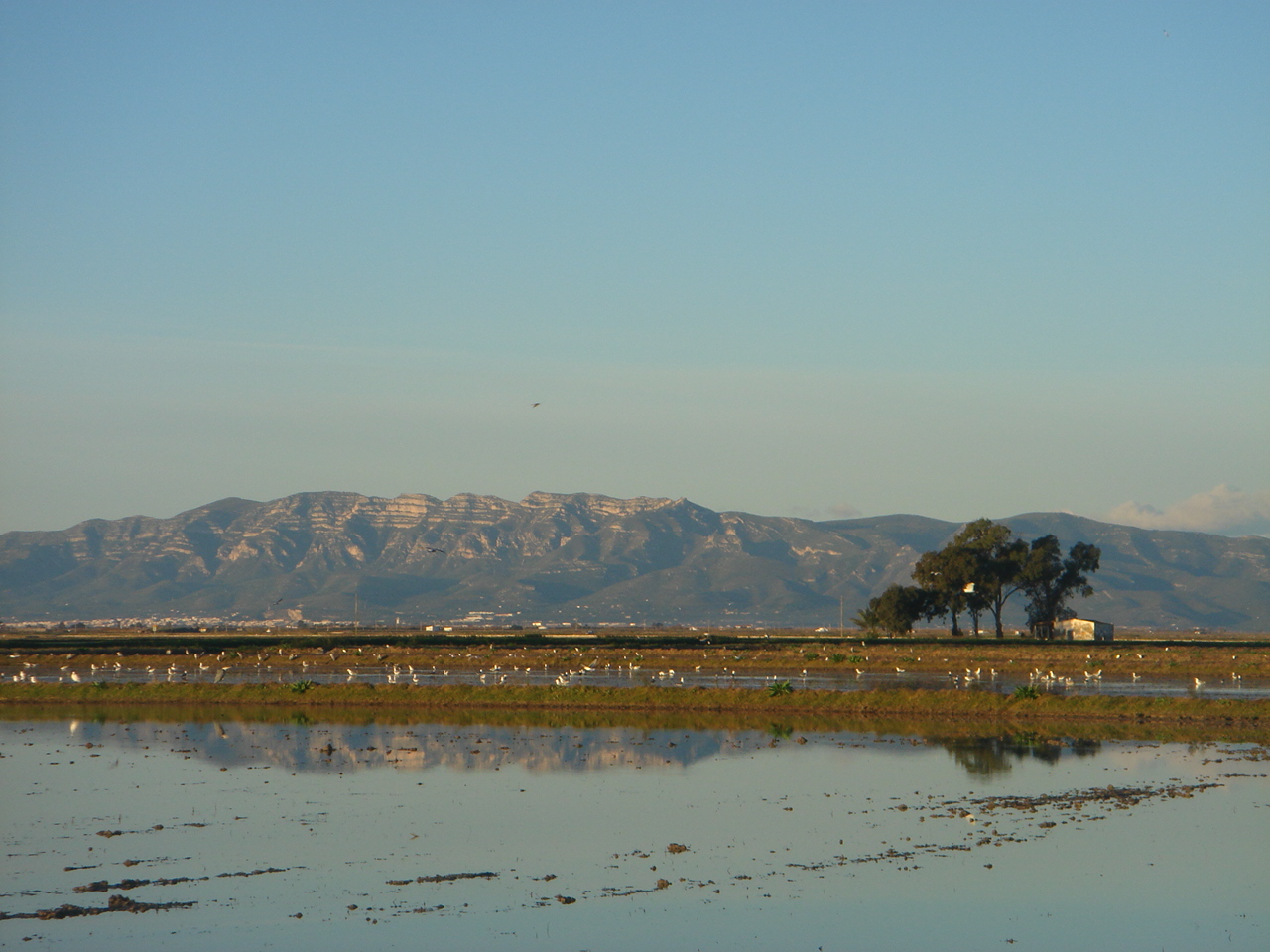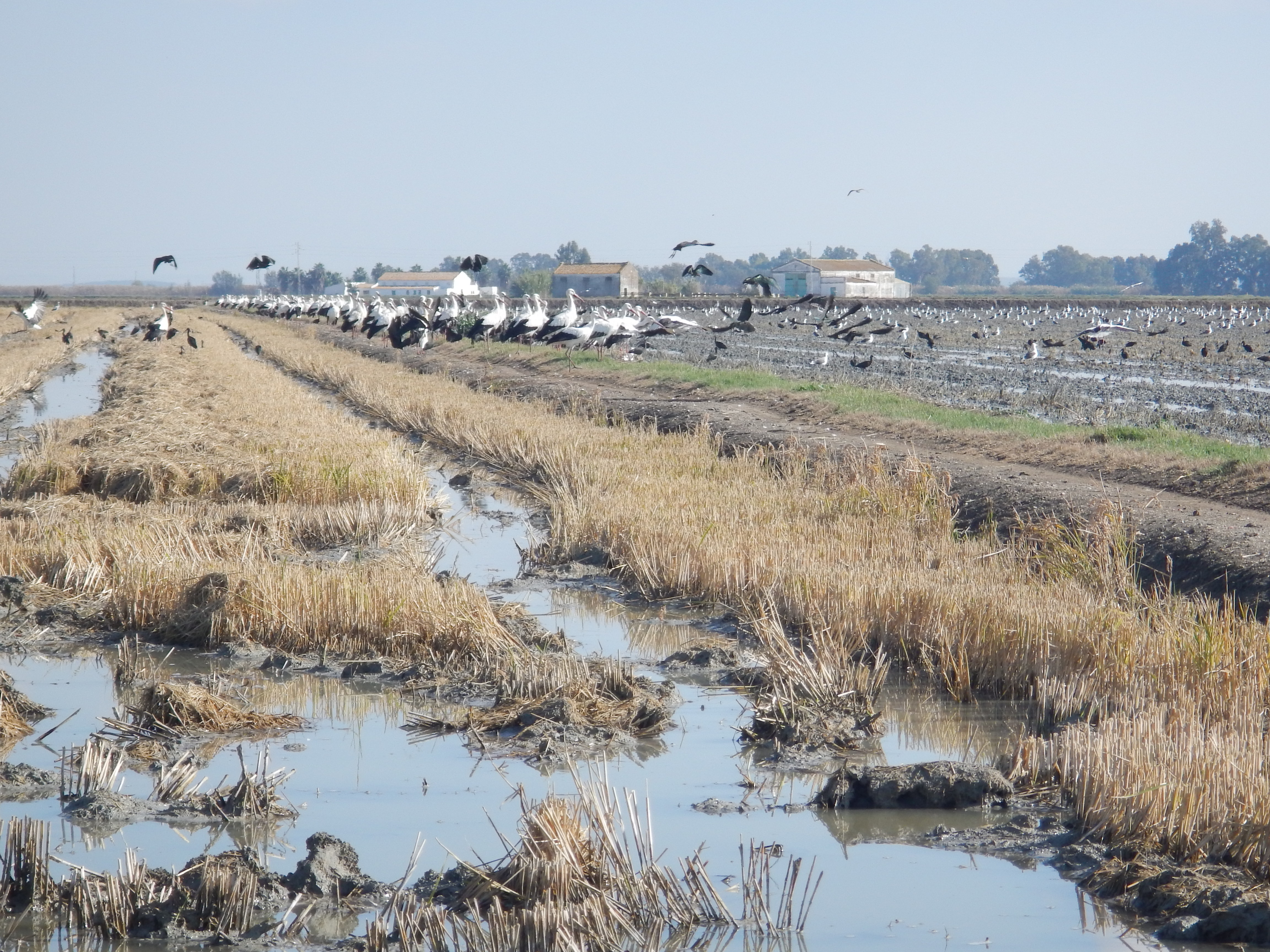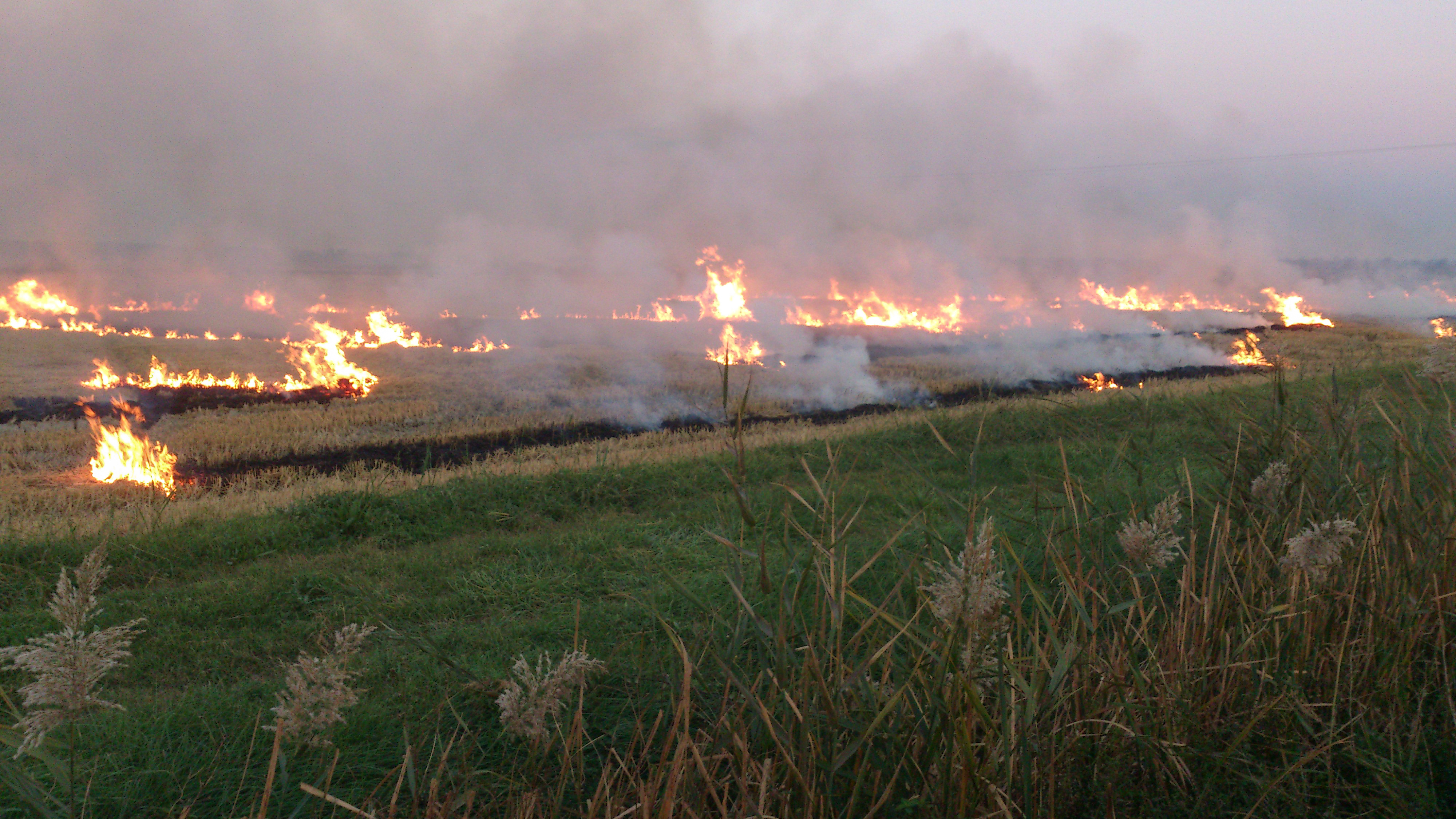The results of a study recently published in the journal Biological Conservation highlights the advantages for ducks of flooding European rice fields in the winter (access the article’s abstract through the opposite link).
This study was conducted by Claire Pernollet, who has been a doctoral student at the Tour du Valat since 2013. It was co-supervised by the Tour du Valat and the section of the ONCFS (French National Office for Hunting and Wildlife) specialising in migratory avifauna.

Flooded rice field in the Ebro delta, Spain (photo J. C. Cicera)
According to this study, which was conducted in parallel at five major rice growing sites in southern Europe (the Camargue in France, the provinces of Pavia and Vercelli in Italy, and the Ebre and Albufera de Valencia deltas in Spain), the abundance of wintering ducks is positively correlated to the total area of wetlands in the broad sense of the term (natural wetlands and flooded rice fields).
For instance, the number of wintering ducks has increased considerably in Spain, subsequent to the European subsidies established in the early 2000s (agri-environmental measures), which encourage the flooding of 62% of the total area of rice fields at the sites studied.

The flooding of the rice fields during winter in Spain (here in the Doñana Natural Park in Andalucia) is particularly in favour of the local avifauna (photo C. Pernollet – Tour du Valat / ONCFS)
Meanwhile, the Camargue is the region where natural habitats are the most representative, but in which only 9% of the rice fields are flooded in winter. Flooding these areas during the winter would make it possible to provide ducks with feeding habitats that are complementary to the natural habitats, which would increase their wintering populations. A costs/benefits analysis is currently being conducted in order to assess the environmental pertinence and economic feasibility of such actions.

In the Camargue, rice fields are not flooded in the winter and the rice straws are burnt after the harvest (photo M. Renaudin)
It would also be interesting to reflect on the possible joint management of this flooding of rice fields along the entire flyway, beginning in the Po Plain in Italy, where nearly all natural wetlands have disappeared and very few rice fields are flooded in winter.
Biliographical reference: C. Pernollet *, A. Guelmami, A. Green, A. Curco Masip, B. Dies, G. Bogliani, F. Tesio, A. Brogi, M. Gauthier-Clerc, M. Guillemain. A comparison of wintering duck numbers among European rice production areas with contrasting flooding regimes. Biological Conservation (2015, 186:214-224). DOI : 10.1016/j.biocon.2015.03.019
Contact: Claire Pernollet (e-mail)